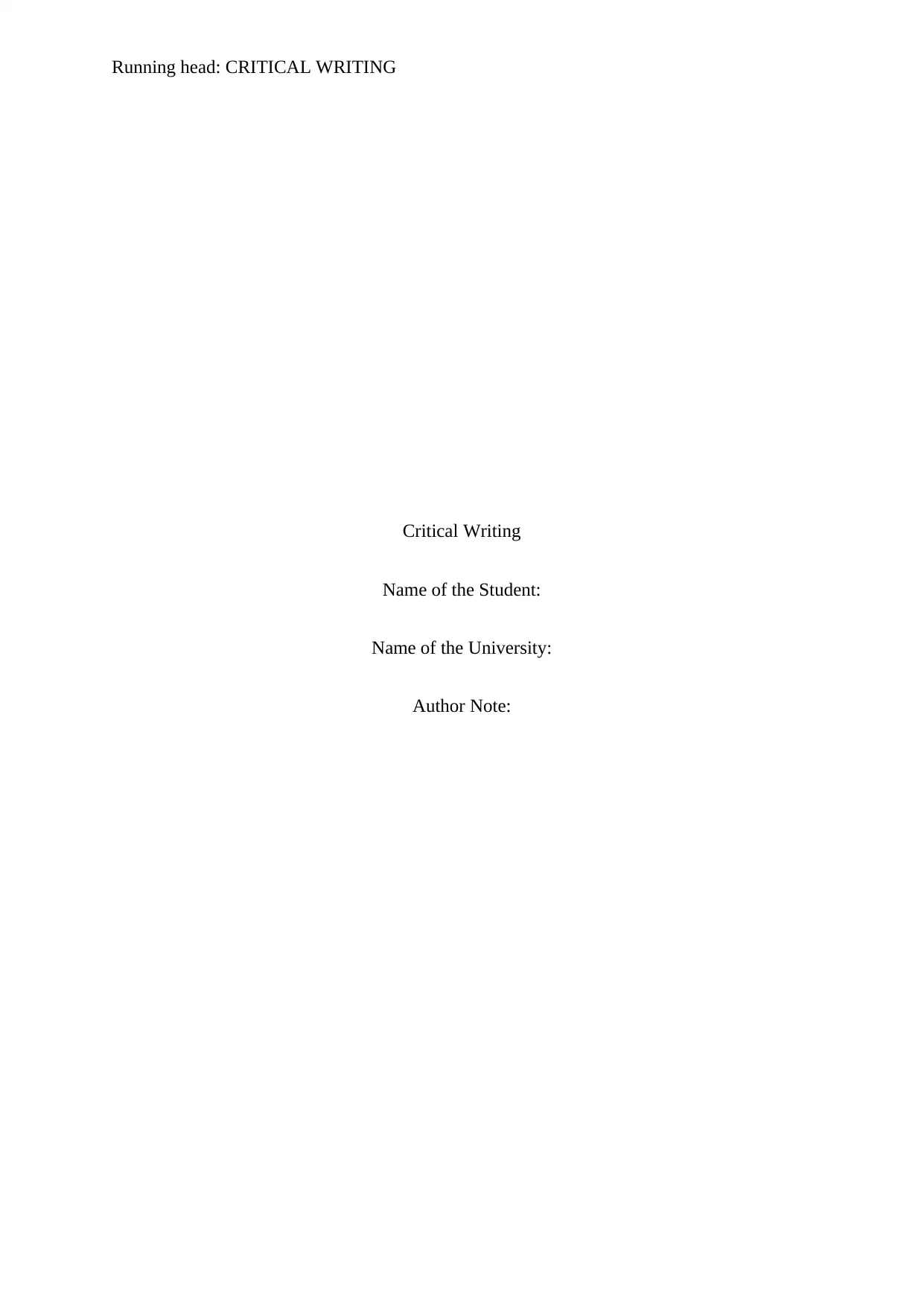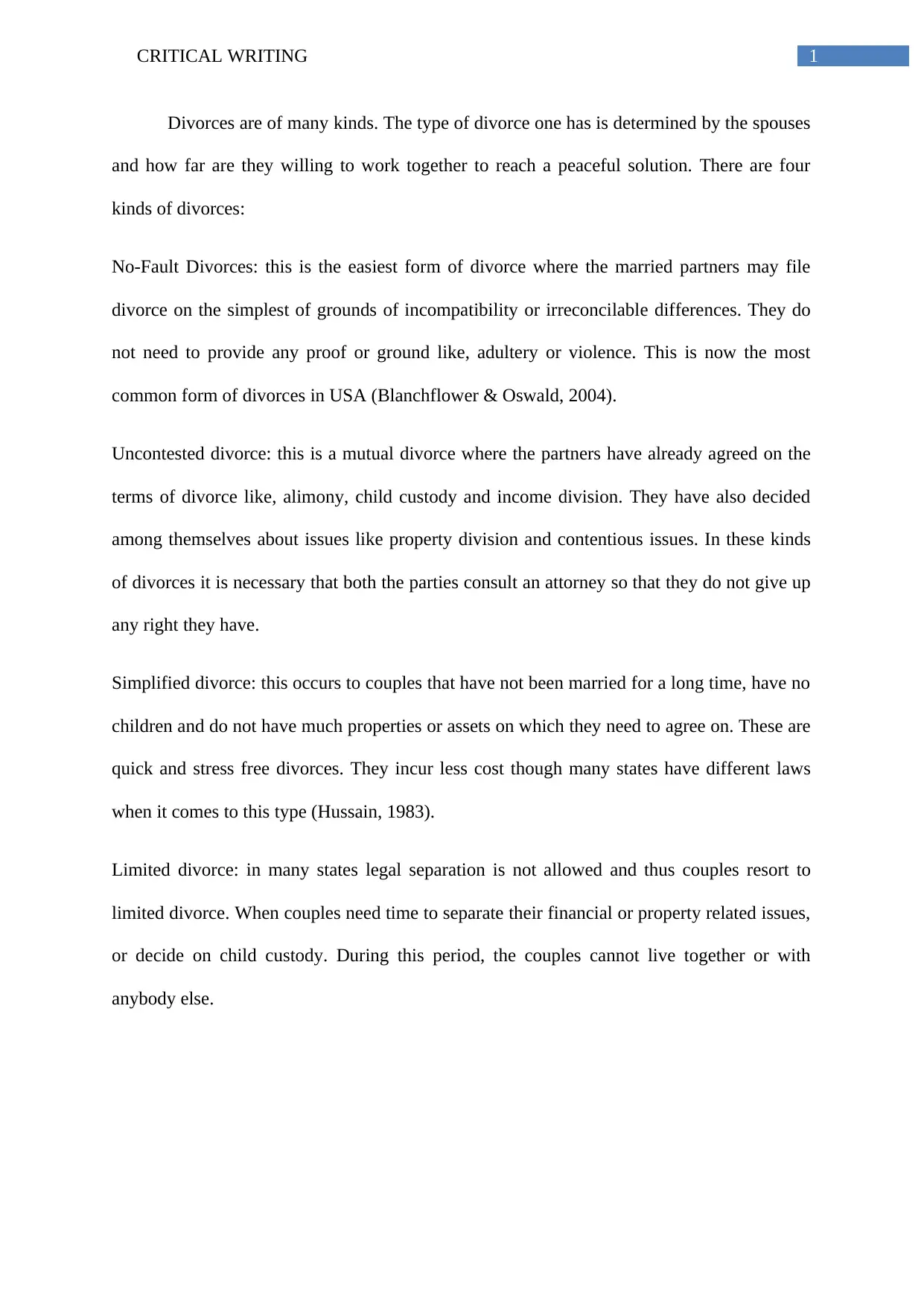Analysis of Different Divorce Types and Legal Implications
VerifiedAdded on 2022/10/16
|3
|388
|1
Report
AI Summary
This report examines different types of divorces, including no-fault, uncontested, simplified, and limited divorces, and their legal implications. No-fault divorces, the most common type, allow for divorce based on irreconcilable differences without proving fault. Uncontested divorces involve mutual agreement on terms like alimony and child custody, while simplified divorces are for couples with short marriages and minimal assets. Limited divorces, often used in states without legal separation, address property and custody issues while the couple remains separated. The report also references sources like Blanchflower & Oswald (2004) and Hussain (1983) to support the analysis. The report highlights the practical application of different divorce types and their legal complexities. The report provides an overview of the different types of divorce and the relevant legal procedures.
1 out of 3




![[object Object]](/_next/static/media/star-bottom.7253800d.svg)